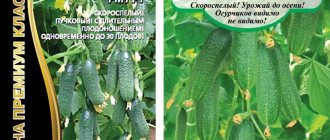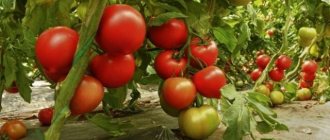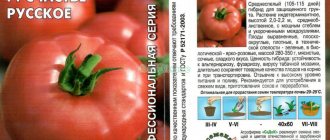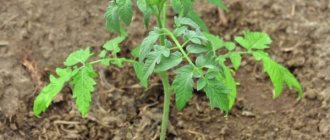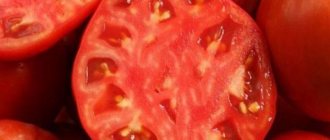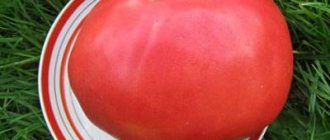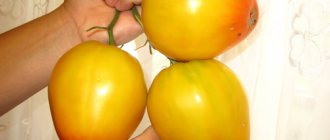Pasalimo f1 is a Dutch hybrid for master farmers and beginning gardeners. It is unpretentious in care and hardy, has strong immunity to a range of infections. The fruits are classic - neat shapes, small sizes, excellent crunchiness.
| Landing location | Ripening time | Mode of application | Fruit length | Group | Fruit smoothness | Pollination method |
| Universal | Early ripening (35-45 days) | Universal | Short (gherkins) - less than 10 cm | Hybrid | Highly lumpy | Parthenocarpic |
Pasalimo, cucumbers: description of the variety
Positioned by the Dutch breeding and seed-growing company Syngenta Seeds BV, this cucumber was included in the state register of the Russian Federation in 2005 and has been cultivated in summer cottages and farms for more than 12 years. The hybrid is approved for cultivation in all regions of the country and grows equally successfully in open beds and in greenhouse conditions. The versatility of the variety is explained by its parthenocarpic properties, i.e. it does not require classical pollination by bees.
The Pasalimo cucumber is a hybrid with a surprisingly short growing season, the scope of which is limited to only 39-41 days, but its fruiting continues until the coldest weather. The gherkin type of vegetable makes it possible to collect fruits of varying degrees of ripeness and sizes:
• pickles - 3-5 cm;
• gherkins - 5-8 cm.
A female-type culture that does not have barren flowers, is medium-sized, indeterminate, i.e., with an unlimitedly growing central shoot.
Light green, pubescent leaves reach medium size. A special feature of the hybrid is the ability to form up to 6-12 ovaries in one node. Zelentsy are one-sized, regular elongated, white-thorned, tuberculate, short (up to 8-9 cm), weighing up to 80-90 grams.
The Pasalimo cucumber is covered with a bright emerald-colored skin with slightly pronounced spotting and fuzzy light lines. The hybrid has excellent crispy flesh, devoid of unpleasant bitterness.
How to care for crops
To get the maximum benefit from the Pasalimo F1 cucumber variety, they need to be well looked after and harvested in a timely manner.
Watering and fertilizing
Cucumbers of the Pasalimo F1 variety need regular and proper watering. Insufficient watering negatively affects the yield and taste of this vegetable.
It is recommended to water the plants approximately once every 5–7 days. But it is worth noting that the amount of watering depends largely on weather conditions. In hot weather, watering should be done more often, every 1-2 days, and when rainy weather occurs, watering should be stopped.
Watering is carried out according to the following calculation - about 1 bucket of water is used for 1 m² or for each adult bush. It is best to use the drip irrigation method. In sunny weather, you should water only at the roots, as moisture on the leaves can cause sunburn. It is best to carry out this process in the evening hours.
To maximize the yield of the crop, it is necessary to carry out at least 3–5 feedings during the entire growing season. Lack of nutrients leads to cucumbers becoming small, losing shape, color and taste.
The first feeding is done when the first shoots appear. To do this, use organic fertilizers - rotted manure or bird droppings. Such organic matter with a volume of 1 liter is diluted in 10 liters of water, 0.5 liters of wood ash are added, as well as mineral fertilizers (15 g of urea, 50 g of superphosphate, 15 g of potassium sulfate). During the period of fruit ripening, the volume of nitrogen and potassium fertilizers is doubled.
It is also useful to carry out foliar feeding. To do this, you can spray every 14–20 days with a solution prepared from the following ratio: 5 g of ammonium nitrate, 10 g of superphosphate and 8 g of potassium sulfate per 10 liters of liquid. One bucket with a volume of 10 liters is enough for a 30 m² area with planting.
Forming and tying a bush
To ensure proper formation of the bush, pinching is done. When 6-7 leaves appear, the main stem is pinched above the 5th or 6th leaf - this stops the plant’s growth in height and promotes the appearance of side vines, on which the ovary will subsequently appear, which will greatly increase the yield of the plant crop.
To prevent the fruits from ending up on the ground and starting to rot, the vines of the plant must be tied to pre-installed trellises. To install them, supports made of wood or metal 1–1.2 m high are dug into the ground, and a rope or wire is pulled between them. The whips are tied to this structure.
Important! Old women's tights, soft rags or ribbons are used as material for garters. It is necessary to use only soft fabric so as not to damage the shoots
Soil care
After watering, you should loosen the soil around the cucumbers to a depth of about 5–7 cm. This will prevent the appearance of a crust on top of the soil and improve the flow of water and air to the plant crop. Simultaneously with loosening, weeds are removed, which draw moisture and nutrients from the soil.
To prevent drying out, as well as to prevent the appearance of weeds, it is recommended to mulch the soil near the bushes. Straw, peat, sawdust, manure, and humus are used as mulch.
Diseases and pests of the variety
Cucumbers of the Pasalimo F1 variety are resistant to diseases such as powdery mildew, cladosporiosis, and cucumber mosaic.
If you observe crop rotation and carefully care for this plant crop, then no diseases are scary. But watering with cold water, heavy cold rains, lack of solar heat, and temperature changes can provoke the appearance of certain diseases, including various types of rot. To combat such diseases, appropriate chemical preparations are used (Fitosporin, Bordeaux mixture).
Cucumbers may be susceptible to pests such as aphids, whiteflies, spider mites or thrips. When they appear, spray with chemicals such as “Tandem” and “ATO Zhuk” are used. Folk remedies also help well - spraying with a solution of laundry soap and tobacco.
Productivity and disease resistance
The variety is remarkable for its very high percentage of yield of high-quality marketable products, which is almost 96% for vegetables grown in a greenhouse and a slightly lower figure for the harvest from open beds. 13-15 kg of cucumbers are usually harvested from 1 square meter. After harvesting, the fruits retain their commercial qualities for a long time. Even green plants that are not removed in time do not outgrow. The Pasalimo cucumber, the photo of which is presented in the article, is universal. It is consumed fresh and excellent in marinades, pickles, and snacks, since the dense structure of the hybrid pulp prevents the formation of voids during heat treatment.
The advantage of the hybrid is its high resistance to cucumber scourges such as powdery mildew, cladosporiosis, and cucumber mosaic virus, which can destroy the lion's share of the crop.
So, the advantages of the variety are high taste properties, one-dimensional fruits, good yield, resistance to typical diseases, transportability and marketability.
Characteristics of the variety
Pasalimo cucumbers began to gain popularity from the first season, confirming the characteristics of the seed producer:
- parthenocarpic;
- harvest (14.2 kg/m2);
- early ripening (39-41 days);
- for cultivation in open ground and film greenhouses;
- resistant to many diseases;
- gherkin (8-10 cm);
- cucumbers do not overgrow and are not bitter;
- delicious in fresh and canned form.
This variety is also suitable for transportation and retains its presentation for a long time.
Cucumber Pasalimo: planting features
The hybrid produces the highest yields on fertile, well-drained loamy soils. Like all cucumbers, Pasalimo (reviews from vegetable growers confirm) are partial to an abundance of light and warmth. Therefore, when choosing areas for planting, they are guided by these very criteria. The best predecessors are nightshades, onions, legumes and cruciferous vegetables.
The hybrid is grown by seedlings or seeds, which are sown immediately in the greenhouse. By the time of sowing, the soil should be warmed up to 15-18 ° C, since cucumber is a heat-loving plant. Therefore, the approximate timing of Pasalimo’s landing in the middle and temperate latitudes of the country is considered to be the period from May 15 to 25, although one has to rely on the weather prevailing in the region. The optimal daytime temperatures required by the plant for high-quality development should not be lower than 22-24 ˚С, night temperatures – 18 ˚С.
Pasalimo cucumber seeds are sown for seedlings at the end of April. If the climate in the region makes it possible to plant vegetables in open ground, bypassing the seedling period, then the gardener’s work is greatly facilitated.
Reviews
Most gardeners describe the practice of growing varieties on the positive side. For example, gardener Anna admires the high yield of vegetables. Natalya from Volgograd wrote in her review that the cucumber quickly begins the harvest phase and does not get sick. Oksana from Rasskazovo really liked the taste of the fruit.
Some farmers note: bushes take up a lot of space in the garden bed. Vegetable grower Kirill does not like the need to constantly devote time to the formation of a plant.
The Pasalimo F1 cucumber is famous for its decent yield and versatility. Its fruits can be picked at different stages of ripeness, sent fresh for processing, canned, and salted.
Seedling care
The Pasalimo cucumber variety produces tall but fragile shoots. Therefore, knowledgeable vegetable growers recommend sowing them for seedlings immediately in separate containers. This will significantly improve the condition of the seedlings, will not stunt their growth, strengthen the stem and develop a strong root system in a short time.
Seedlings need good care, which includes sufficient lighting and maintaining the air temperature at 20-25 °C. Water the sprouted seedlings very moderately, avoiding excessive moisture. It can cause bacterial infections. It is important to remember that the seedling period for cucumber is quite limited and does not exceed 25-30 days. Overgrown seedlings take a long time to take root.
Advantages and disadvantages
In fact, due to its hybridity and mixing of different varieties of cucumbers (more than 10), the variety has many positive aspects. Advantages of the variety:
- resistance to many diseases and pests;
- If you don’t collect the fruits on time, you don’t have to worry, they won’t disappear or turn yellow;
- can be stored for a long time;
- tolerate transportation normally;
- excellent taste;
- versatility of use;
- the variety ripens quickly;
- excellent presentation;
- If stored properly, it can last for more than 4-5 months.
Greenhouse preparation and planting
Before planting in a greenhouse, you need to take into account some features of indoor cultivation, since without appropriate treatment it is difficult to avoid infectious damage, despite the good immunity of the Pasalimo hybrid.
In autumn, the soil and all parts of the greenhouse are sprayed with a solution of copper sulfate from a spray bottle. In the spring, before planting, dig up the soil and add 15-20 kg of humus or compost per 1 square meter. m. Pasalimo cucumber is a tall crop, so holes 12-15 cm deep are located 0.4-0.5 m from each other. The varietal characteristics of the hybrid determine the planting density: per 1 sq. m plant 4-5 plants. The technology is simple: the holes are spilled with water, the containers with seedlings are also well moistened and, taking out the seedling with a lump of earth, carefully place it in the hole. Then the soil around the seedling is compacted and watered again.
Cultivation care
Pasalimo is classified as a variety with average formation of lateral shoots, the appearance of which must be controlled so that the plant does not increase green mass to the detriment of fruit formation. After the 6-8th leaf, the top of the central stem is pinched, provoking branching. For fruiting, 1-2 strong stems are left, other lateral axillary shoots are cut off. Cucumber plantings are carefully monitored, kept clean, periodically loosened superficially and carefully and removing weeds. Water with exclusively warm water, which is applied to the root, avoiding moistening the entire plant.
Greenhouse cultivation of cucumber involves the use of vertical supports, which allows you to increase the number of plants and obtain high yields of healthy fruits that do not come into contact with the soil.
Garter cords are often used as supports or special trellises are installed, i.e. slatted lattices with cells measuring 20-50 cm. The stems are tied up as the crop grows.
Growing and care
Due to the stormy growing season, the bushes must be shaped:
- the main shoot is pinched at the level of the 7-8th leaf;
- leave the main 2 branches;
- cut off all subsequent axillary shoots.
For irrigation, use water heated to 20-25 degrees. The procedure is carried out in the evening hours.
The hybrid is grown vertically. Trellis structures are installed on the beds and the canes are fixed.
Feeding is applied regularly - every 2 weeks. First fertilizers may include:
- urea;
- superphosphate;
- potassium sulfate.
Take 15 g of each product and dilute it in 10 liters.
Subsequently, bioinfusions or solutions of organic matter (mullein, droppings) are prepared.

